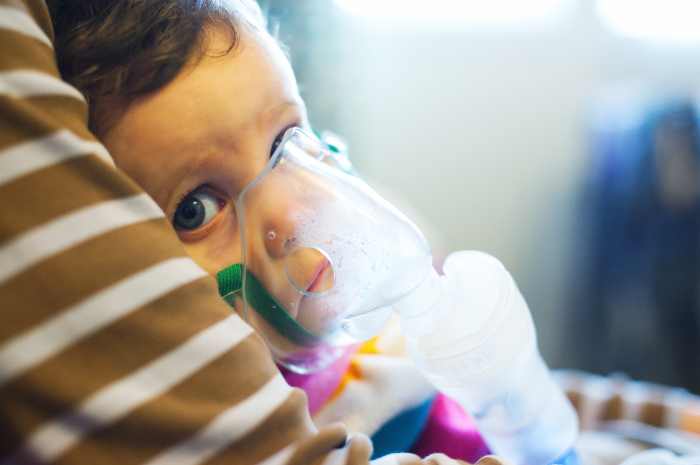Commonly referred to as croup, laryngotracheobronchitis is a condition that primarily affects young children. It is characterized by inflammation of the upper airway, leading to a distinctive barking cough and difficulty breathing. This illness often causes alarm among parents due to its sudden onset and unique symptoms. In this article, we will explore the nature of croup, its underlying causes, common symptoms, and the best ways to manage and care for affected individuals.

What Is Croup?
Croup is an infection that targets the respiratory system, specifically the larynx, trachea, and bronchi. The hallmark of this condition is the swelling of these areas, which results in a narrowing of the airways. This narrowing is what leads to the characteristic “barking” cough and other respiratory symptoms. While croup is most commonly seen in children between six months and three years of age, it can occasionally affect older children and even adults.
The severity of croup can vary widely. Some cases are mild and resolve on their own, while others may require medical intervention to prevent complications such as severe breathing difficulties. Understanding the nature of this illness is crucial for parents and caregivers to ensure timely and appropriate care.
Causes of Croup
The primary cause of croup is viral infections. Most cases are triggered by the parainfluenza virus, which belongs to the same family as the viruses responsible for the common cold and influenza. However, other viruses, such as adenovirus, respiratory syncytial virus, and measles, can also lead to croup-like symptoms.
Viral Triggers
- Parainfluenza Virus: This is the most common culprit behind croup. It spreads through respiratory droplets when an infected person coughs or sneezes.
- Adenovirus: Known for causing a wide range of illnesses, adenovirus can sometimes lead to croup, especially in younger children.
- Respiratory Syncytial Virus: Often associated with bronchiolitis and pneumonia, this virus can also cause inflammation of the upper airway.
Environmental Factors
Besides viral infections, certain environmental factors can exacerbate croup symptoms. Cold weather, for instance, is known to worsen the condition. Children who are exposed to chilly air during the night may experience more severe episodes of croup. Additionally, irritants such as cigarette smoke or strong odors can trigger or worsen symptoms.
Symptoms of Croup
The symptoms of croup typically develop suddenly and are most noticeable at night. Parents may first notice a mild cold or runny nose, followed by the onset of more specific symptoms. Recognizing these signs early can help in managing the condition effectively.
Early Signs
- Runny Nose: A child may initially present with a runny or stuffy nose, similar to the beginning of a common cold.
- Mild Fever: A low-grade fever is often present, although it is not always a prominent symptom.
- Hoarseness: The voice may become raspy or hoarse, signaling the onset of airway inflammation.
Distinctive Symptoms
- Barking Cough: The most recognizable symptom of croup is the harsh, barking cough. This sound is caused by the narrowed airway and is often compared to the noise made by a seal.
- Stridor: Stridor is a high-pitched wheezing sound that occurs when the child breathes in. It indicates significant narrowing of the airway and requires immediate attention if it becomes severe.
- Breathing Difficulties: As the inflammation worsens, children may exhibit signs of labored breathing, such as flaring nostrils or retractions (the skin pulling in around the ribs).
Diagnosis of Croup
Diagnosing croup is usually straightforward and relies heavily on the presence of characteristic symptoms. Healthcare providers often assess the child’s breathing patterns, listen to the cough, and evaluate any stridor. In most cases, no additional tests are required. However, if the diagnosis is uncertain or if the child has severe symptoms, further evaluation may be necessary.
Physical Examination
During a physical examination, the healthcare provider will observe the child’s breathing and listen to their lungs using a stethoscope. They may also check for signs of dehydration or other complications. The barking cough and stridor are key indicators that help confirm the diagnosis.
Additional Tests
In rare cases, imaging studies such as X-rays may be used to rule out other conditions like epiglottitis or foreign body aspiration. Blood tests are generally not required unless there is suspicion of a bacterial infection requiring antibiotics.
Treatment and Management of Croup
The treatment of croup depends on the severity of the symptoms. Mild cases can often be managed at home with simple measures, while more severe cases may require medical intervention.
Home Care
For mild cases of croup, home care is often sufficient. Here are some strategies that can help alleviate symptoms:
- Humidified Air: Using a cool-mist humidifier in the child’s room can soothe irritated airways and ease breathing. Alternatively, taking the child into a steamy bathroom for a few minutes may provide relief.
- Hydration: Keeping the child well-hydrated is essential. Offer plenty of fluids, such as water or warm broth, to prevent dehydration.
- Comfort Measures: Ensuring the child is calm and comfortable can reduce anxiety, which may otherwise worsen breathing difficulties.
Medical Interventions
If the symptoms are moderate to severe, medical treatment may be necessary. Common interventions include:
- Oral Steroids: These medications, such as dexamethasone, are often prescribed to reduce inflammation in the airway. They can significantly improve symptoms within a few hours.
- Nebulized Epinephrine: In cases of severe stridor or breathing difficulties, nebulized epinephrine may be administered in a hospital setting to quickly reduce airway swelling.
- Oxygen Therapy: If the child is struggling to breathe, supplemental oxygen may be provided to ensure adequate oxygen levels in the blood.
Prevention of Croup
While it may not be possible to completely prevent croup, certain measures can reduce the risk of infection and minimize exposure to triggers.
Vaccination
Ensuring that children receive all recommended vaccinations is one of the most effective ways to prevent viral infections that can lead to croup. Vaccines for measles and influenza, for example, can significantly lower the risk of developing croup.
Hygiene Practices
Good hygiene practices play a crucial role in preventing the spread of viruses. Encourage frequent handwashing, especially during cold and flu season. Avoid close contact with individuals who are sick, and teach children to cover their mouths when coughing or sneezing.
Avoiding Irritants
Minimizing exposure to environmental irritants can also help prevent croup episodes. Keep children away from cigarette smoke, strong perfumes, and other potential triggers that can irritate the airways.
When to Seek Medical Attention
While many cases of croup are mild and manageable at home, certain signs indicate the need for immediate medical attention. Parents should seek help if their child exhibits any of the following:
- Severe difficulty breathing or rapid breathing
- Bluish or grayish skin color, especially around the lips or fingernails
- Drooling or inability to swallow
- Extreme agitation or lethargy
- Persistent stridor even at rest
These symptoms suggest that the airway may be severely compromised and require urgent intervention to prevent complications.
Caring for a Child with Croup
Caring for a child with croup involves both physical and emotional support. Parents and caregivers should remain calm and reassuring, as anxiety can exacerbate the child’s symptoms. Providing a soothing environment and adhering to the recommended treatment plan can make a significant difference in the child’s recovery.
Creating a Comfortable Environment
Ensure the child’s room is well-ventilated and free of irritants. Use a cool-mist humidifier to maintain optimal humidity levels. Keeping the room slightly cool can also help reduce airway irritation.
Monitoring Progress
Regularly monitor the child’s symptoms and note any changes. If the condition improves with home care, continue the routine. However, if symptoms worsen or fail to improve, consult a healthcare provider promptly.





